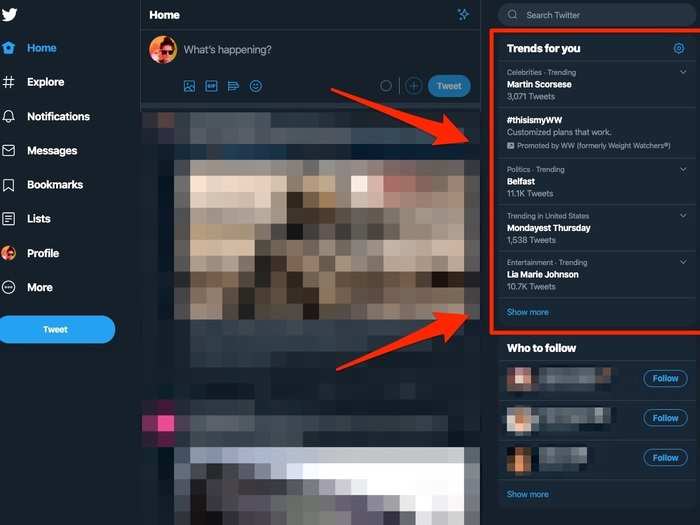- Home
- slideshows
- miscellaneous
- A Twitter 'bug' led to the address of an Arizona high school trending on the platform 'for hours.' What else could go wrong?
A Twitter 'bug' led to the address of an Arizona high school trending on the platform 'for hours.' What else could go wrong?
30 schools, 30 tweets

The FBI, the NFL, and vegetables: how Twitter's "trends for you" works

To figure out how an Arizona high school's address showed up in personalized Twitter trends, it's important to break down how the "trends for you" tab works. According to Twitter's website, personalized trends are determined by a Twitter algorithm based on three aspects: who you follow, your interests, and your location.
Although finding out who you follow and where you're located are straight-forward, your "interests" are based on the trove of data and information Twitter gathers from you on a daily basis, from tweets you like and retweet to places you travel. Some of that information is stored in a little-known tab hidden in your privacy settings, called "interests from Twitter." You can find step-by-step instructions for finding that list here.
This list of hundreds of terms — ranging from general topics and issues, to names of journalists and celebrities, to companies and sports teams — is "based on your profile, activity, and the Topics you follow," Twitter says at the top of this interest list.
Twitter confirmed to Business Insider that this list of interests determines what shows up in each user's personalized trends tab, although the company emphasized that there's "a bunch of inputs" that go into it.
Business Insider was given access to nine Twitter accounts belonging to users who had the Arizona high school show up in their Twitter trends. According to our analysis, these nine people had around 80 common terms found on their interest lists. There were some terms all nine users shared that could explain why they were shown a trend about a community meeting with a superintendent, including "coffee," and "education."
However, it fails to explain why users across the country were shown a small, local event happening in Arizona. The shared interests among users also included a slew of extraneous terms, including "vegetables," "NFL," "hip-hop and rap," and "Federal Bureau of Investigation."
Hacking Twitter trends and 2020

A Twitter spokesperson told Business Insider that the high school address' place on the trending list for some users was a "bug." It was up for a "few hours" before Twitter's team took notice and took it down.
Twitter said the term failed to meet the platform's "standards" for what trends on the platform — not because it was an address and location of a high school, but because there weren't enough tweets and mention to warrant its presence.
Twitter's handling of this incident raises questions about what is allowed to trend for users. Under its rules for trends, Twitter doesn't allow anything containing "profanity or adult/graphic references," topics that "incite hate," or those that violate Twitter's rules on harassment and hateful conduct.
I asked Twitter whether my home address would be allowed to trend on the platform. Twitter said that if an address "can be found on the internet," it's considered "public," and thus fair game for Twitter's trends. The fine line for what constitutes as "public" is murky, especially when it comes to situations like "doxxing," where private, sensitive information is published online for the public to see.
On a larger scale, the situation flags concerns about how easy it is to "hack" Twitter trends to get messages and topics on the home pages of the platform's millions of users. Porn bot accounts have flooded Twitter to get explicit terms and graphic images trending. Twitter has been cited as playing a part in spreading fake news and conspiracies regarding the death of Jeffrey Epstein and the misidentification of suspects in the Boston Marathon bombings.
However, the most high-profile incident of Twitter hacking comes from the 2016 presidential election. Studies have found that bots and automated accounts on Twitter were instrumental in the spread of false claims and misleading headlines over truth and accuracy. Lawmakers have criticized Twitter for its failure to protect voters, and Twitter CEO Jack Dorsey admitted in 2018 that the platform has yet to figure out how to stamp out false info.
As we approach the 2020 election, it's unclear whether Twitter is ready to prevent a repeat of the events of 2016. Twitter has removed millions of tweets and bot accounts that have spread disinformation, and announced in late 2019 is was banning political ads on its site.
But if 30 tweets posted on Twitter are enough to get a high school address trending and left online for hours, it leaves open questions about what else could trend before Twitter takes notice.
Popular Right Now
Popular Keywords
Advertisement